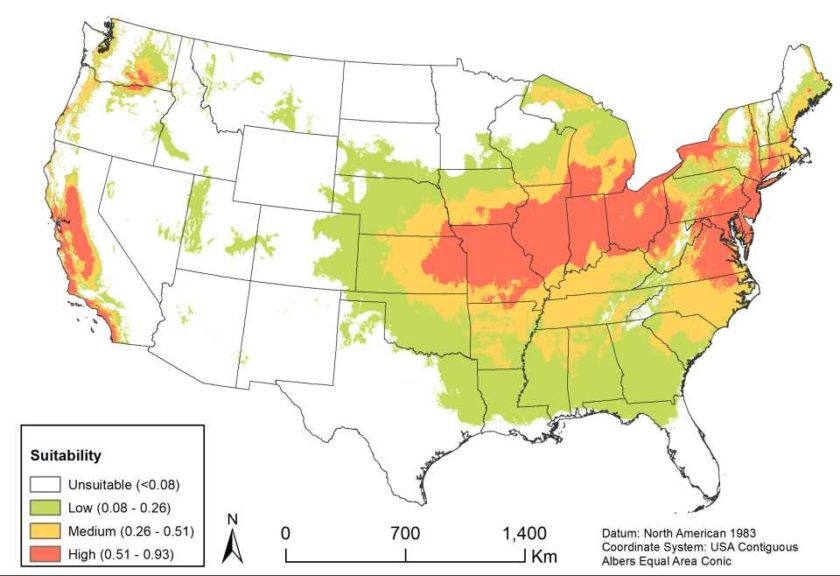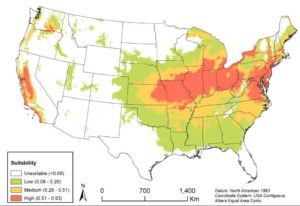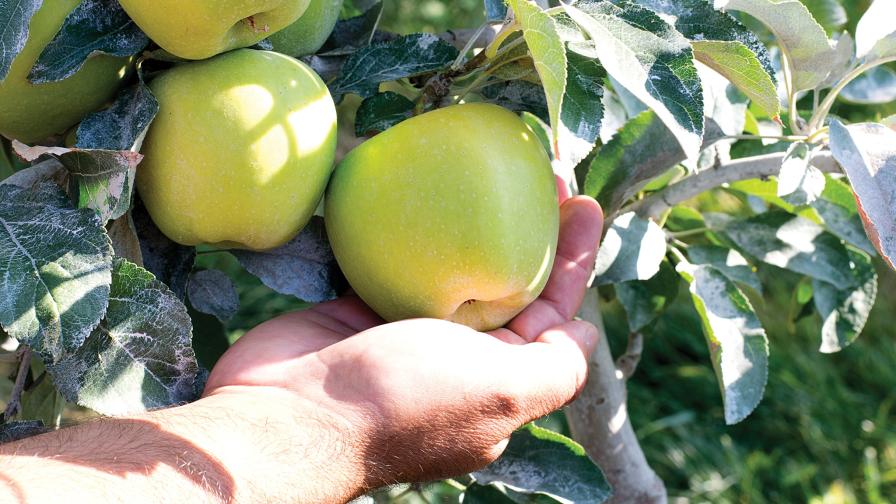Is the Dreaded Spotted Lanternfly Headed Your Way?
The spotted lanternfly can really get around. Scientists know this for a fact. They also know how much farther the ag pest threat can spread. Recently, a unique map identifying areas suitable for establishment of the spotted lanternfly in the U.S. and other countries was published in the Journal of Economic Entomology by USDA-ARS researchers.
Originally from China, the spotted lanternfly has spread to Korea and Japan, and has been found most recently in the U.S. in Pennsylvania, New Jersey, Virginia, and Delaware. These insects are pests of many agricultural crops including almonds, apples, blueberries, cherries, peaches, grapes, and hops as well as hardwoods such as oak, walnut, poplar, and others.
USDA and state partners have been working to contain spotted lanternfly populations since 2014. But, as we all know, nature can find a way to break containment. Within the U.S., ARS researchers predict spotted lanternfly could eventually become established in most of New England and the Mid-Atlantic states, parts of the Midwest, as well as Pacific coastal states.
“Earlier attempts to predict the spread of the spotted lanternfly using a less sophisticated model had indicated a potential for the pest to become established in warmer areas such as southeastern Florida and in tropical countries,” said Tewodros Wakie, ARS researcher with the Temperate Tree Fruit and Vegetable Research Unit in Wapato, WA. “But we made use of a more complex model called Maxent that depends on a wider number of environmental factors including temperature, elevation, and rainfall as well as the current known locations of the species.”
According to Wakie, Maxent has proven to be much more accurate at predicting where species are likely to spread compared to 16 other methods on 266 species.
Large parts of the Northeast U.S., the Pacific Northwest, and 11 European countries were found to be prime habitat for spotted lanternfly establishment in place of tropical locales with Maxent.
Wakie explained the most important factor in predicting spotted lanternfly establishment is the mean temperature of the driest quarter of the year. It cannot be too hot or too cold — about 0°C plus or minus 7°C.
Another important factor in predicting the pest’s possible range that Wakie pointed out is the presence of the tree of heaven — an invasive plant that also originated in China. Although it’s not the only host for spotted lanternfly, it is a highly important host plant for the insect. Studies are underway to identify additional host plants and to find the right biocontrol system.

















